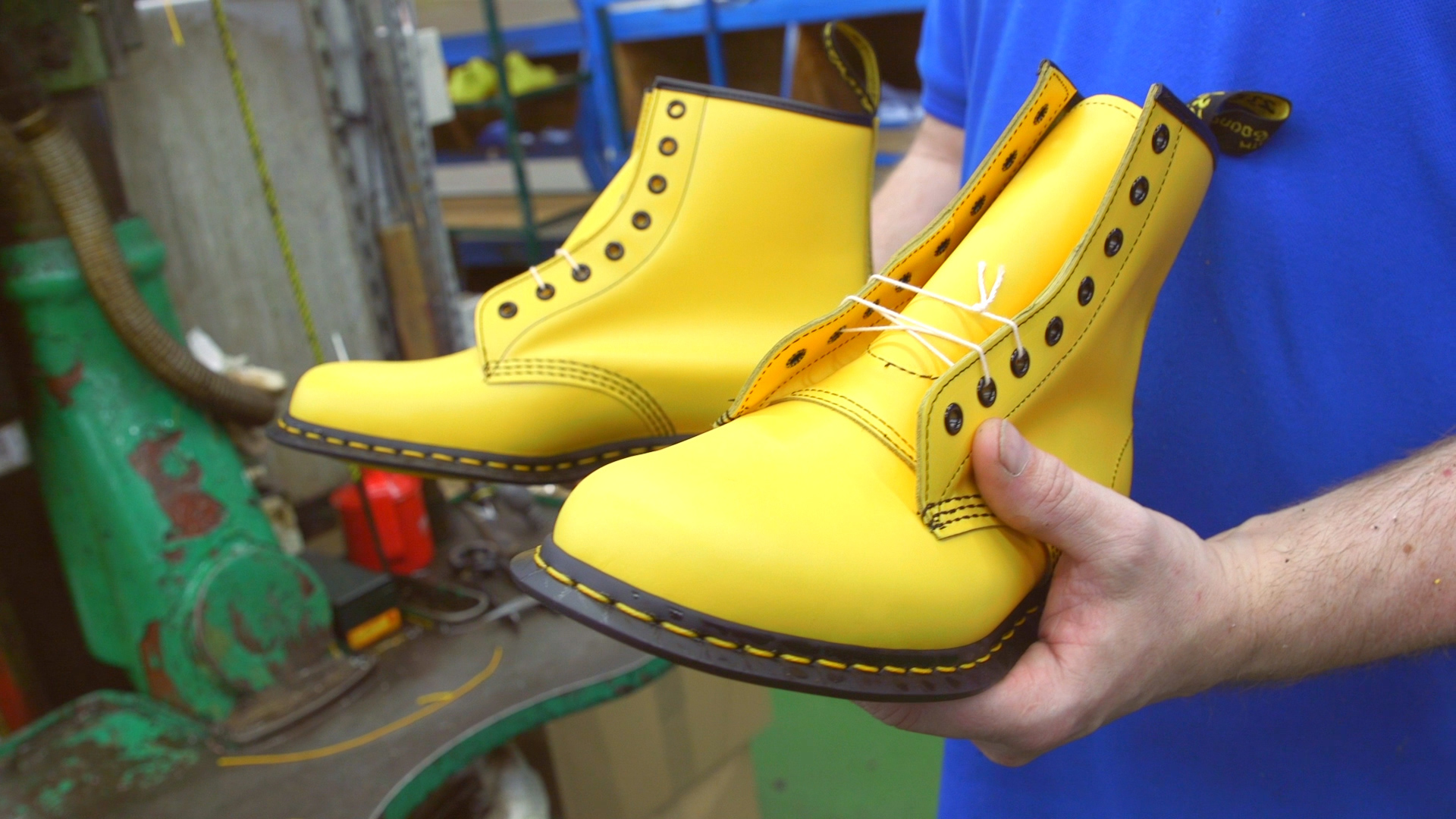- We visited Dr. Martens’ only UK factory on Cobbs Lane in Wollaston, Northamptonshire.
- The iconic 1460 boots were made here for the first time in 1960.
- This is where Dr. Martens makes it’s iconic Made in England collection.
- The production process happens in four rooms: the Clicking Room, the Closing Room, the Lasting Track, and the Shoe Room.
- Only 50 people work at the Cobbs Lane factory.
- They make about 100,000 pairs of boots and shoes per year, which is only 1% of what the brand makes as a whole.
Dr. Martens is one of those brands that needs no introduction.
Before acquiring worldwide fame and becoming a staple in British culture, the iconic shoes with yellow-threaded soles were made in a single factory building in Cobbs Lane in Wollaston, Northamptonshire. The Griggs family, who owned the building, progressively expanded the site, and later on, the brand started to open factories outside of England.
The original Cobbs Lane site is still in place and this is where the Made in England collection is made, as well as vintage Dr. Martens and collaboration shoes with other brands.
"This factory is ground zero for Dr. Martens," Production Manager Steve Bent told Business Insider. "The main product that Dr. Martens make is the 1460 boot, the eight eyelet boot that everybody recognizes as a Doc. That was made in this factory floor on the first of the fourth 1960."
The production process happens in four rooms.
The first one is the Clicking Room, where leather is assessed, cut, and embossed.
The leather then moves to the Closing Room, where all the pieces are stitched together using different sewing machines, the eyelets are punched in, and a toe puff is added.
The Lasting Track is where the shoe starts to get its shape. The name of the room comes from the last, which is the mould that goes inside the shoe. This is also where the famous yellow thread is stitched.
Once the leather is pulled tight around the last and the excess is cut off, the thread is used to stitch a PVC welt to the leather.
"PVC welt is the stage where things start to become uniquely Dr. Martens," said Bent. "All other last stitching factories will use something along the lines of a leather welt and they'll stitch the sole onto the welt once the welt is stitched onto the upper.
"We do things differently. We stitch a PVC welt all the way around the upper."
The welt and the sole are then melted together using hot blades are rollers, making it one whole piece of PVC.
The final part of the process happens in the Shoe Room, where shoes are going to be cleaned, laced, tagged, inspected, and finally boxed.
As of today, only 50 people work at the Cobbs Lane factory making about 100,000 pairs of boots and shoes per year, which is only 1% of what the brand makes as a whole.
Produced by Claudia Romeo. Filmed by Claudia Romeo and Leon Siciliano.

